Watering a kratom tree recovering from winter
This video was recorded in the middle of march in the morning.You can see there is some new growth starting to grow out the top leaf. This new growth will be light green in color. This new leaf will be bitter but not as bitter as the leaf from over the winter. Though the leaf has been beaten up by the elements from winter the leaf will be stronger because of the stress it was put through.
Christmas Cactus: How to take cuttings
#kratomthetree , #iamkratom, #wearekratom, #christmascactus, #cactus
Developing Kratom Seed Pods in beginning stages hanging on a Kratom tree
Developing Kratom Seed Pods in beginning stages hanging on a Kratom tree
Developing Kratom Seed Pods in beginning stages hanging on a Kratom tree – Fresh and ripe Kratom seed are grown for 6 – 10 year old Organic American grown Kratom trees. The growers have acclimated the trees to the gulf region. Growing instructions, and support are included for those in all environments. Below is a link to our American Kratom seed pod dissection.
How do you collect Kratom Seed Pods?
Developing Kratom Seed Pods in beginning stages hanging on a Kratom tree – Kratrom trees take years to mature. Because of this they can be quite tall making them hard to reach. A single kratom tree can grow to over two hundred foot tall. Our dedicated team have had to make choices on the most efficient and effective way to bring them down. A big factor that plays out over time is how we grow the trees. If we top our taller trees they will start to bush out more near the bottom. However some of our trees are too tall to reach with a ladder. We have built a Kratom Seed Pod collector for this purpose.
Kratom Seed Pod Fertilization
Kratom seed pods from the nursery are confirmed to have at least 60% fertilization. One can assess this by the projections (pods) erupting from the circular flower bulb. These continue to grow until they are mature. Once kratom seed pods are ready to release seed, the kratom seed pod husk bursts open. Kratom seed are quite small and light. The seed will blow all over out of the kratom trees.
Developing Kratom Seed Pods in beginning stages hanging on a Kratom tree – Bees and other insects are attracted to the pungent sweet smell of the kratom seed pods as they develop on the kratom trees. For that reason bees rub themselves on the stems of the exposed seed pods as they travel around the seed pod collecting the pollen in their fur as they go. While they travel from kratom tree to kratom tree the collected pollen rubs off onto the other seed pods that the bees land on. As a result this fertilizes the kratom seed pods.
On the other hand, each seed pods is to hand fertilize by staff. As well, a staff member will climb up on the ladder and grab what ever seed pods are close and rub them against each other. Turning them and spinning them in our hands to get the maximum effect. This ensures the viability of the seed pod.
Organic American Kratom Leaf is available here for purchase.
How to tell a fertile seed pod?
Developing Kratom Seed Pods in beginning stages hanging on a Kratom tree – Fresh and ripe Kratom seed are grown for 6 – 10 year old Organic American grown Kratom trees. The growers have acclimated the trees to the gulf region. Growing instructions, and support are included for those in all environments. Below is a link to our American Kratom seed pod dissection. – Each Kratom seed pods also have very distinct difference between a fertile seed pod and a inftertile pod. Fertile kratom seed pods will be plump in contrast to infertile pod that are smooth and round. For that reason, make sure to be careful if you want a full pod to stay intact as they break apart from the center very easily. Most notably, this video shows every stage of a kratom seed pod.
Lastly, a infertile kratom seed pods are completely round and are very very tiny. They will almost look like a honeycomb in a ball. Infertile kratom seed pods are very soft and will roll around in the hand. In contrast, there is not much that can be done with these pods. Here is a short video to show you what they look like.
Organic American Kratom Leaf is available here for purchase.
How to sprout Kratom Seed Pod! And answering commonly asked questions!
If this is your first time growing from kratom seed our team recommends you spend a few minuets to watch this educational video. These seed pods were planted in March 2019 – June 2019 kept outdoors in very hot and humid conditions while being covered in clear plastic wrap.

The Kratom Project
Organic American Kratom Leaf is available here for purchase.
Our staff goal is to merge tech with kratom to document every single aspect of these amazing plant while we grow these magnificent We have taken kratom documentation to a new level and introduce “The Kratom Project”. On the #kratomAPP Kratom Watch Dog we tracking our kratom nursery as well as uploading every single interaction our staff has with our fully mature organic American kratom tree nursery. We track is how much and how often we water or fertilize. Furthermore, the growth with photos or video that were taken for the day that are also then accessible from that day on the Kratom Watch Dog in the Photos Section. Contact our team about “The Kratom Project” and help make history. We appreciate the continued support from the kratom community.
Utilizing a technology called NFC (Near Field Communication). Designed to store information that can be retrieved by NFC-enabled devices. Smartphones and Tablets are common to use with NFC. These small stickers of wireless technology can also allow data transfer between two NFC enabled devices.

The Kratom Bible is also available here on the #kratomAPP
The #KratomAPP
Lastly, Join us on the #kratomAPP on KratomWatchDog We are a Kratom social network built from the ground up by one of the founding member of the non-profit American Kratom Association. We are a booming social community with a focus on kratom advocacy. You can also find us on our group on Facebook by looking up Kratom The Tree or email us at kozykratom@gmail.com We are more than happy to talk with you anytime, and share our experience.
Organic American Kratom Leaf is available here for purchase.
Picking tons of fresh p. Viridis leaf off the tree
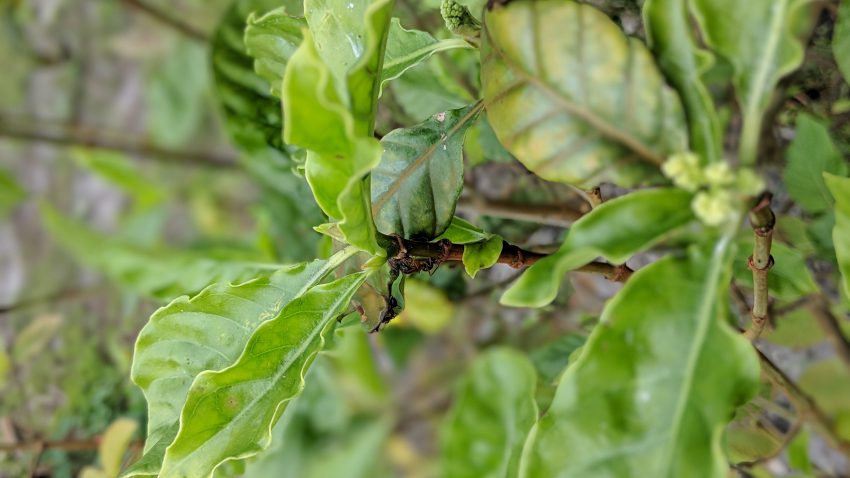
Picking tons of fresh p. Viridis leaf off the tree
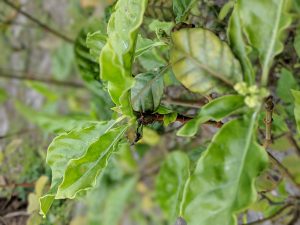
Picking tons of fresh p. Viridis leaf off the tree
Picking tons of fresh p. Viridis leaf off the tree. These are leafy structures that cover and protect the young developing leaves, then fall off, leaving scars on the stem. The stipules are produced in pairs, and their form is distinctive for P. viridis. They are 5–25 mm (0.20–0.98 in) by 4–12 mm (0.16–0.47 in), elliptic in outline, sharply angled at the apex, papery to membranaceous in texture, ciliate (i.e., fringed) along the upper margins, and longitudinally flanged or winged along the middle. However, stipule shape and size is quite variable among different plants, and also depends on the stipule’s developmental stage and other factors such as whether the stem that produced it is reproductive or vegetative.
Leaves
Leaves are opposite in arrangement (i.e., produced in pairs along the stems), generally 5–15 cm (2.0–5.9 in) by 2–6 cm (0.79–2.36 in), in outline generally elliptic or often widest above the middle, usually sharply angled at base and apex, papery in texture, overall smooth or infrequently with microscopic plant hairs on the lower surface, have 5–10 pairs of secondary veins, and on the lower surface usually have foveolae (see next item). The leaves are borne on petioles (i.e., leaf stalks) generally 1–10 mm (0.039–0.394 in) long. When dry, the leaves of Psychotria viridis usually are gray or reddish brown and are similar to those of a few other New World species of Psychotria.
Foveolae
These are small pockets found on the lower leaf surface near the junction of the secondary (i.e., side) veins with the central vein. They function as shelter for tiny invertebrates such as mites that live on the plant leaf. These mites apparently often are symbiotic with the plant, taking shelter in these structures and eating fungi and herbivorousinvertebrates that can damage the leaf. The foveolae (also called domatia) are distinctive for Psychotria viridis and a few related species: They are generally 1.5–5 mm (0.059–0.197 in) long and 0.5–1 mm (0.020–0.039 in) wide at the top, conical and tapered to a closed base, open and truncate or variously ornamented at the top, and situated along the sides of the central vein with the opening usually near a secondary vein . These foveolae vary in shape among different plants, and in number on individual leaves, and may not even be present on some leaves. Most often each leaf bears at least one pair of foveolae, which may be close to the apex; the foveolae are often more numerous on leaves from vegetative stems than on those from reproductive stems.
Picking tons of fresh p. Viridis leaf off the tree
American Kratom Leaf with Ants
American Kratom Leaf with Ants
American Kratom Leaf with Ants
Planting Rainbow Eucalyptus Tree in the ground
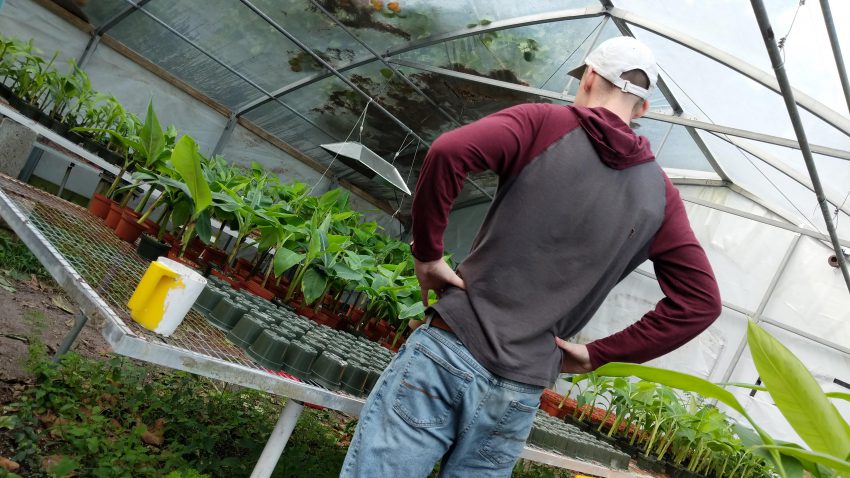
Planting Rainbow Eucalyptus Tree in the ground
Planting Rainbow Eucalyptus Tree in the ground – Here is a fun video of us planting some rainbow eucalyptus in the ground.


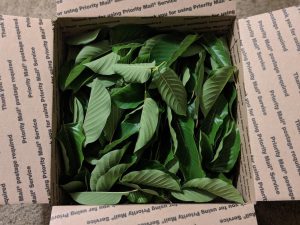
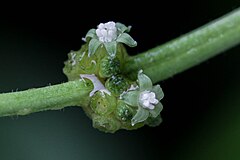
Recent Comments